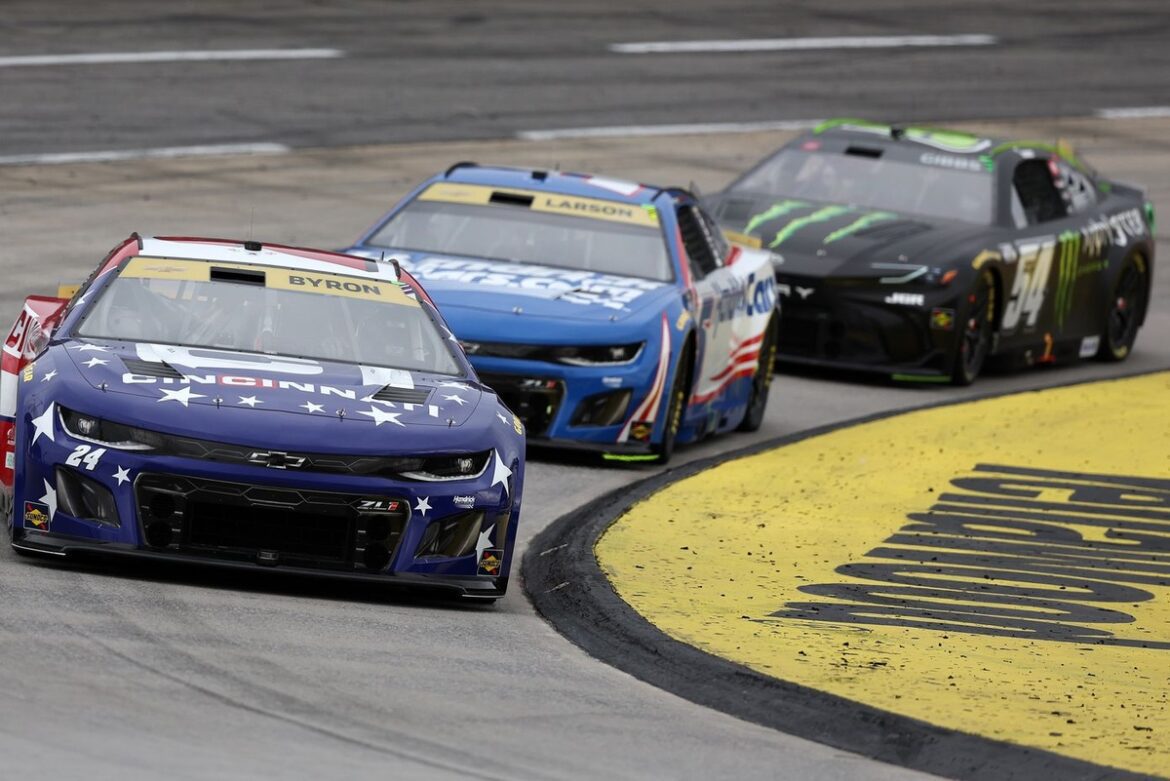Understanding the 2025 NASCAR Cup Series Charter Agreement and Its Implications
In a recent ruling by Judge Kenneth D. Bell, significant information regarding the NASCAR landscape has come to light, particularly concerning the 2025 NASCAR Cup Series Charter Agreement. This decision was part of the legal proceedings involving 23XI Racing and Front Row Motorsports against NASCAR, which led to the unsealing and clarification of several documents related to the case. Among these documents is the full version of the Charter Agreement, which is crucial for all teams involved in the NASCAR Cup Series.
Overview of the 2025 NASCAR Charter Agreement
The 2025 NASCAR Charter Agreement is fundamental for teams competing in the series, as it outlines the financial structure and sharing mechanisms among teams. This agreement is consistent across the 13 teams that have signed it, including the well-known Hendrick Motorsports No. 24 entry, which is assigned Charter Number 08.
One of the key changes in this agreement, compared to previous years, is the methodology used to calculate payments to teams. Previously, from 2014 to 2016, NASCAR utilized a three-year rolling average based on championship finishes to determine the payouts. However, the new framework has shifted to a two-year rolling average, changing the dynamics of how teams are compensated.
Payment Structure Changes
Under the new agreement, the value of each charter is influenced by the performance of teams in the past two seasons. Specifically, it is calculated as follows: 100% of the most recent season’s championship finish combined with 50% of the previous season’s championship finish. This modification significantly impacts the financial stakes for teams, as consistent performance in recent seasons is now weighted more heavily in determining their payouts.
This shift in payment structure underscores the importance of maintaining competitive standings. For instance, the Wood Brothers Racing team benefited from winning races in the last two years, ensuring their finishes placed them within the top 16 in the championship standings. This achievement guarantees them a specific level of financial support, further illustrating why performance on the track translates directly into monetary advantages off the track.
Conversely, the implications of performance can be detrimental. Richard Childress Racing experienced a significant setback when NASCAR ruled Austin Dillon ineligible for a playoff position following a controversial win at Richmond. This decision stripped the No. 3 car of critical championship points, affecting its standing and, subsequently, its payments under the charter agreement.
Importance of Strategic Decisions for Teams
The changes in the charter agreement have led teams to make strategic decisions that can influence their future financial stability. For example, Trackhouse Racing’s decision to promote Shane Van Gisbergen to the Cup Series reflects a calculated move to enhance their competitive edge. By allowing Van Gisbergen to gain experience on oval tracks, the team positioned itself to capitalize on potential wins in road course events, which can significantly increase their year-end financial payouts.
Performance Plan Payout Model
The performance plan payout model introduced with the new charter agreement is essential for understanding how financial shares are distributed among teams. This model allocates a total of 36 shares based on the best average Charter Team Owner Points finish over the past two seasons, tapering down to 1 share for the team with the 36th-best average finish.
The most recent year’s performance is weighted at 100%, while the second most recent year carries a weight of 50%. In situations where teams achieve tied standings in Charter Team Owner Points, they share the credit for their position. For instance, if two teams tie for fifth place in average finishes, they would split the shares for the fifth and sixth places, resulting in an equitable distribution of the performance plan’s financial benefits.
This rolling two-year calculation ensures that teams are rewarded for their recent performance while maintaining a degree of consistency over time. NASCAR commits to informing all charter teams of their projected performance plan payouts within 30 days following the conclusion of the racing season, allowing teams to plan their budgets and strategies accordingly.
Year-End Point Fund Payout and Race Payouts
Beyond the performance plan, another critical aspect of the charter agreement is the year-end point fund payout. This payout structure rewards teams based on their overall performance throughout the racing season. The distribution of these funds is crucial for teams as it directly impacts their operational budgets for the following year.
Race payouts also play a significant role in the financial ecosystem of NASCAR teams. The earnings from individual races contribute to a team’s overall financial health, and consistent performance can lead to increased race payouts. Teams are incentivized to not only compete for championships but also to secure wins and top finishes in individual races to maximize their earnings.
The Broader Impact on the NASCAR Landscape
The changes brought about by the 2025 NASCAR Charter Agreement have broader implications for the sport as a whole. With a more structured financial framework based on performance, teams are motivated to enhance their competitiveness. This shift could lead to more thrilling races as teams strive to outperform each other, knowing that their financial futures depend on it.
Additionally, the emphasis on recent performance in determining payouts may lead to a more dynamic and competitive environment. As teams adapt to these changes, fans can expect to see a more engaging spectacle on the racetrack, with teams pushing their limits to achieve success.
Conclusion: A New Era for NASCAR Teams
The unsealing of the 2025 NASCAR Cup Series Charter Agreement and the subsequent changes it brings signal a new era for NASCAR teams. As teams navigate the intricacies of the updated payment structure and performance metrics, they must remain agile and strategic to thrive in this evolving landscape. The focus on recent performance not only affects financial payouts but also elevates the stakes of competition, promising an exciting future for NASCAR and its fans.
